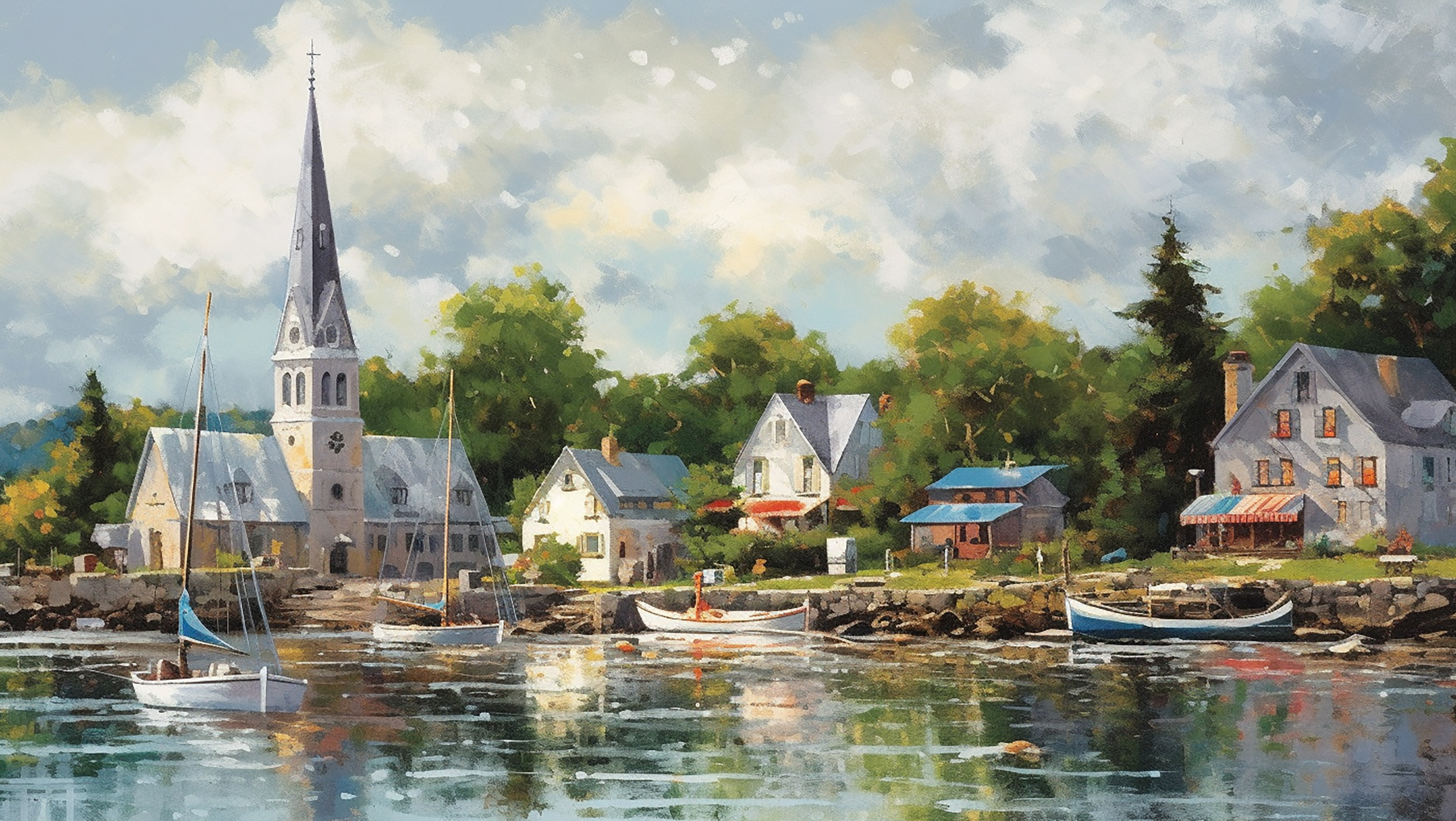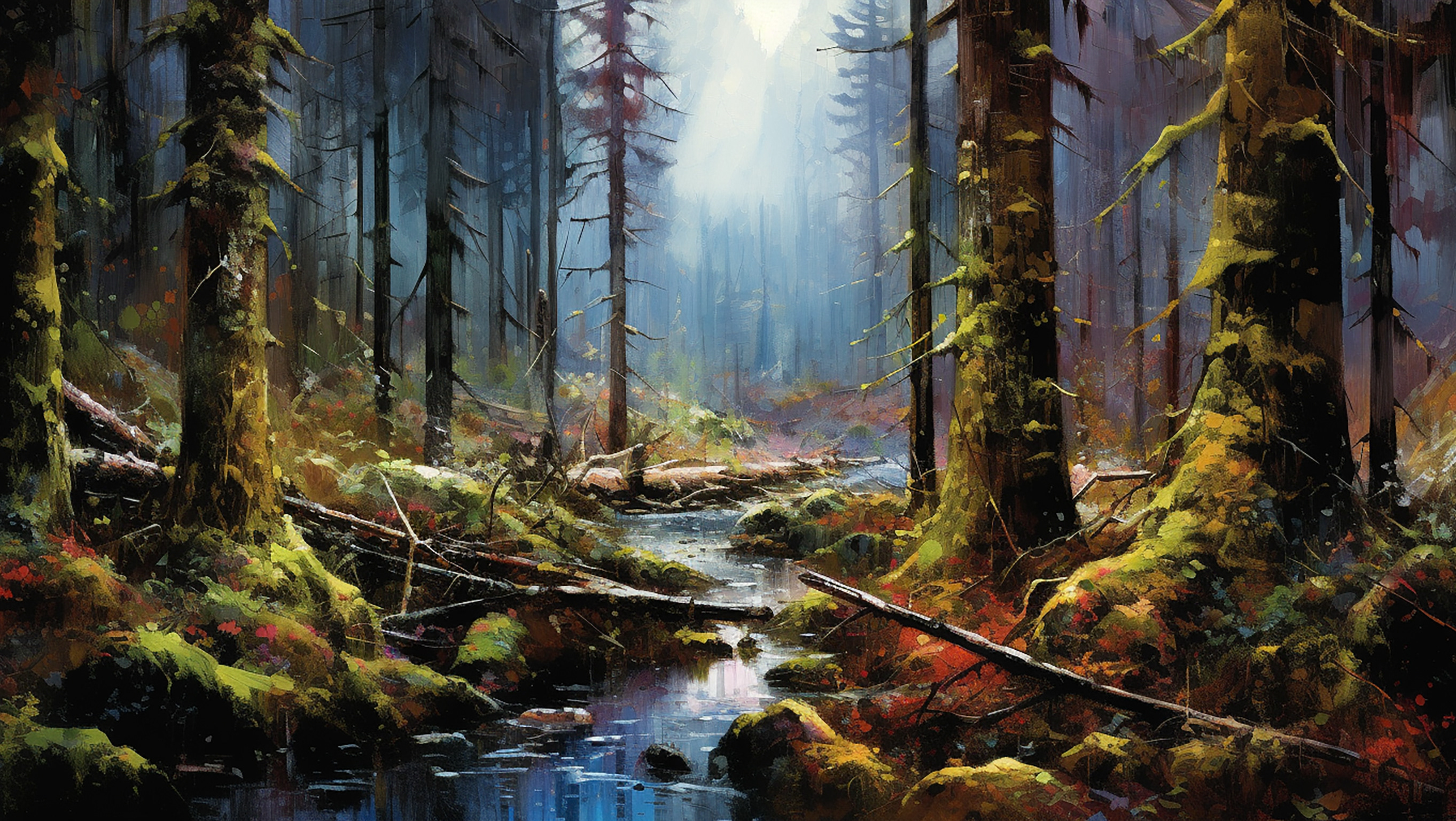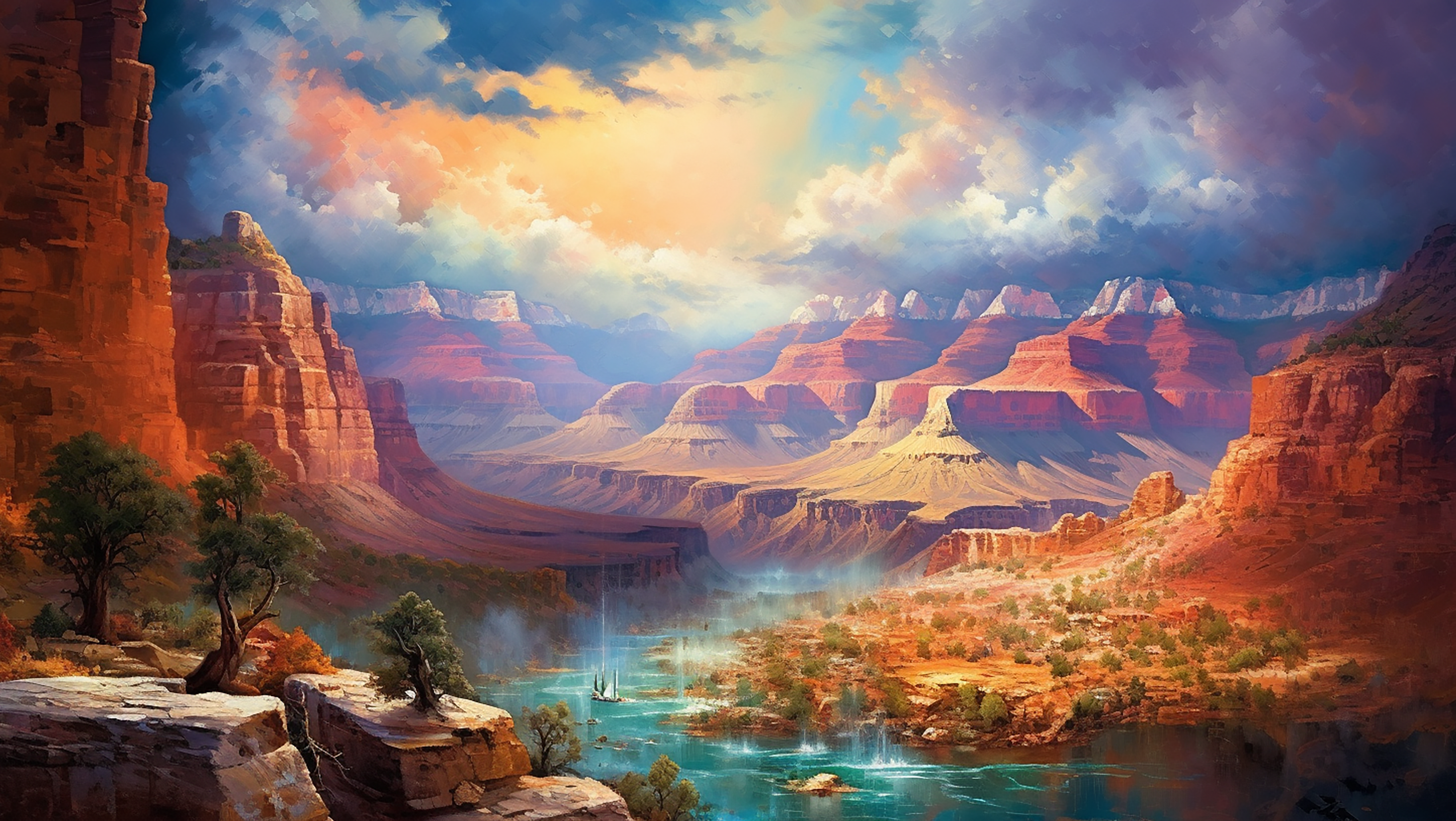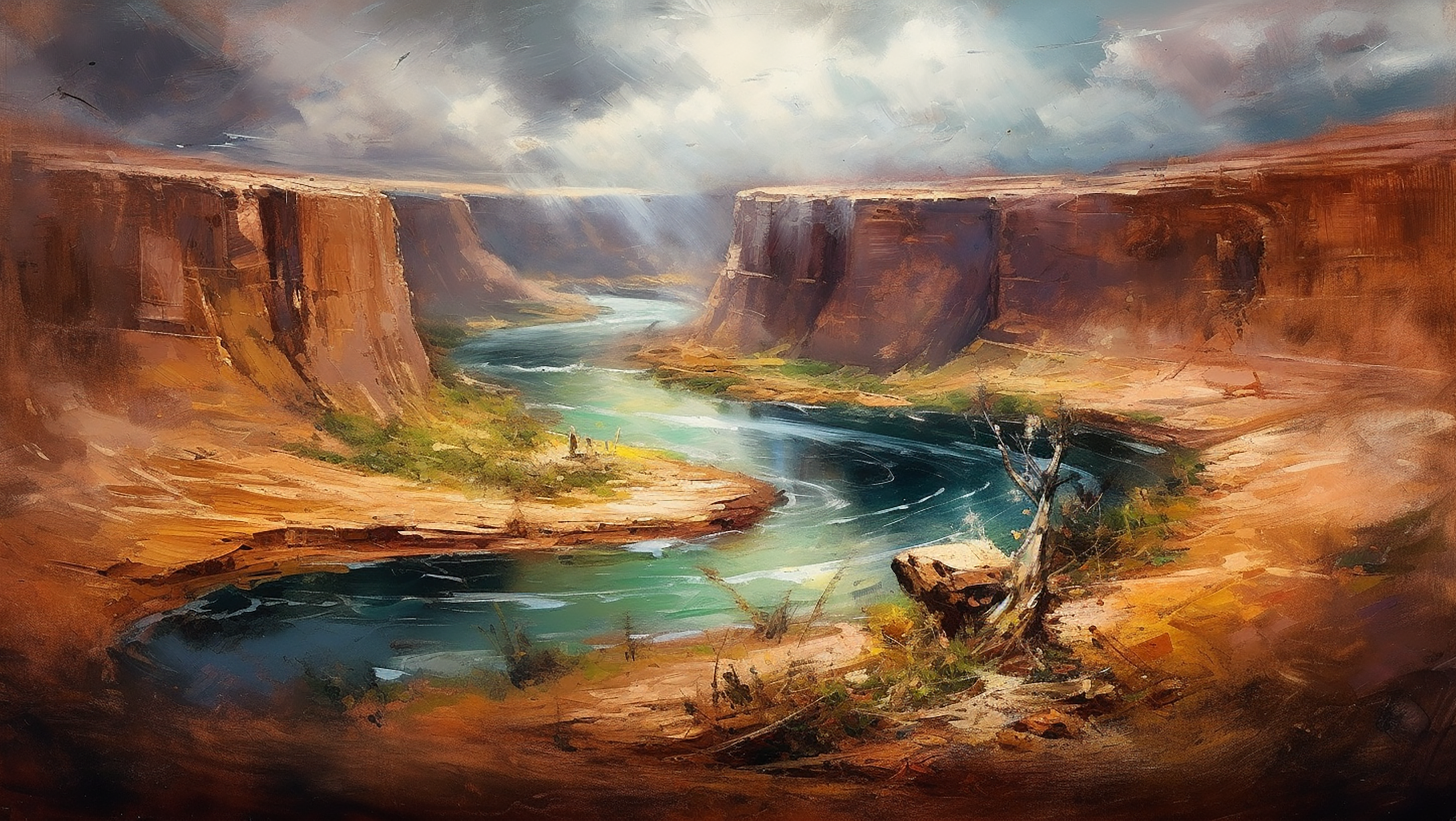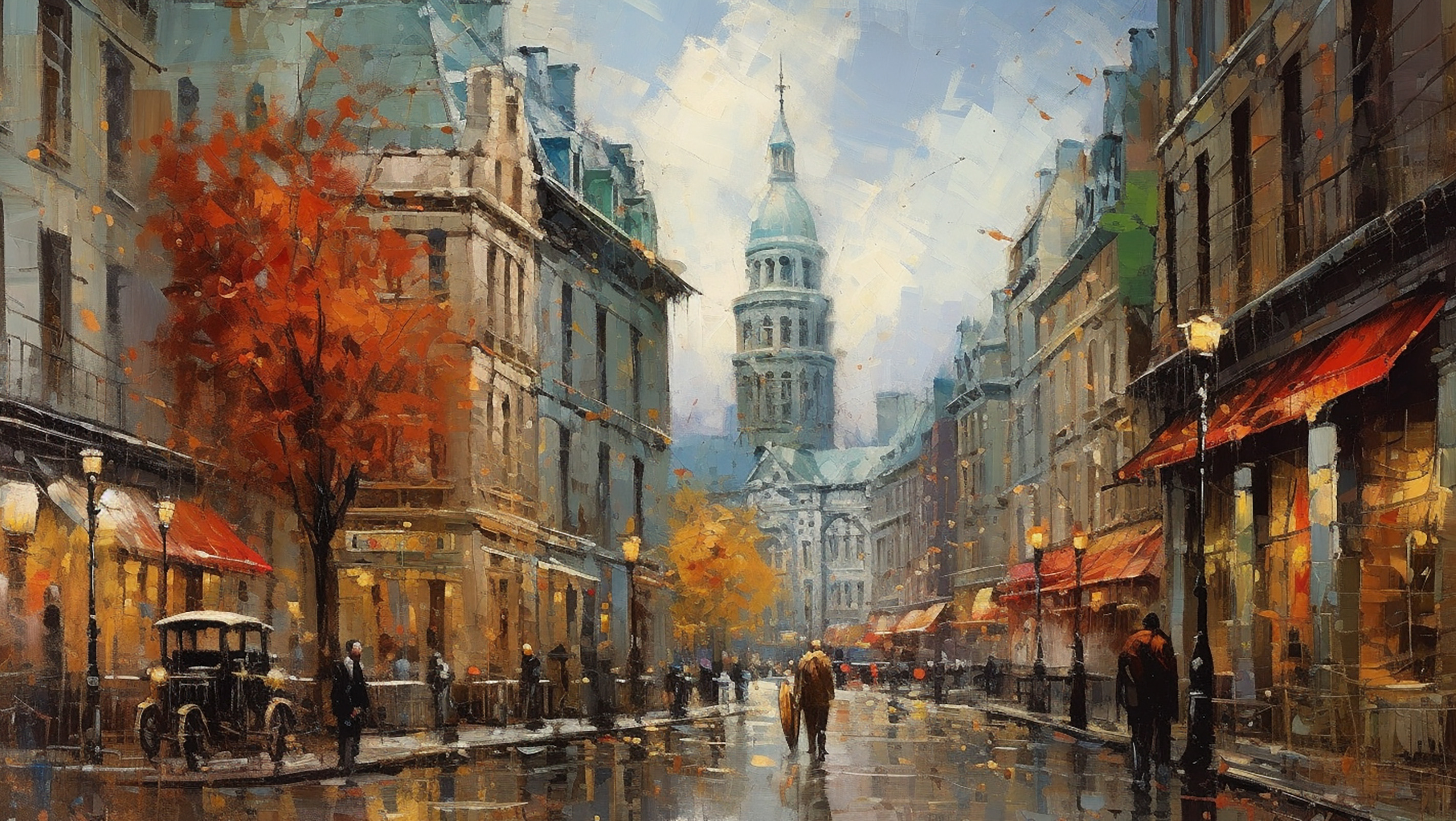Finally, it was time to head to the next point of my journey - Monteverde. The town is not too far from La Fortuna, located across the lake and hidden behind the volcano. However, due to the lack of direct roads, the real journey took about five hours, including a transfer along the way.
A minibus picked me up as planned, and we spent a long time shaking along the edge of the lake, the road seeming never-ending until it suddenly emerged from the jungle onto a higher plateau dotted with cows and electric wind generators. Then, gradually, the road began to descend to the other side of the mountain.
I made a transfer to a local bus at the bus station, which was filled with the sounds of red parrots fluttering here and there in the tall trees and slow-moving creatures that resembled raccoons scampering across the branches.
Finally, the last leg of my journey led me up the road into the mountains, to the town of Monteverde. The town is known for its cloud forests, a unique ecosystem filled with a diversity of flora and fauna that I was looking forward to exploring.
Monteverde is situated high in the mountains. This region is characterized by its so-called "cloud forest," a forest type that greatly differs from the jungle below because of its mountainous and often mist-soaked environment. Clouds frequently pass through at this level, making the forest moist and somewhat cooler than the lowlands.
Monte Verde is located in the Cordillera de Tilarán mountain range, part of a larger system of ranges that stretches across Central America. The unique geographic position of this town, 1,440 meters above sea level, plays a key role in its unique biodiversity. This high-altitude location is characterized by a mix of temperature and rainfall conditions, making it an ideal habitat for many species of flora and fauna.
The Cloud Forests of Costa Rica represent one of the richest biodiversities on the planet, with an estimated 3.5% of worldwide biodiversity in just 0.03% of the Earth's surface area.
The flora in this ecosystem appears different. Rather than the typical tropical broadleaf trees, the vegetation is a lush mix of mid-altitude climate species and tropical varieties. The vegetation is vibrant with an abundance of fruit trees and a wide diversity of animal inhabitants.
I was fortunate with my hotel choice, a sizable establishment located nearly at the centre of Monteverde. Once you step onto its premises, you can tell that land acquisition isn't an issue here. The hotel buildings are scattered across a hill at a significant distance from each other, and to move from one building to another or to reach the reception area, one needs to use a shuttle bus, otherwise, it would consume too much time.
This vast and hilly property felt like a small ecosystem of its own, providing ample opportunity to explore and observe the local fauna and flora without leaving the hotel grounds.
Despite the vastness, my stay was enjoyable, particularly in my two-story house that offered views of the sunset. The brilliant hues of the sunset here were uniquely beautiful. In the fading light, agoutis, large local rodents comparable to a hare in size and behaviour, would emerge to forage. They would diligently scour the area for fallen fruits, similar to squirrels, and bury their findings as a reserve. Due to their relatively poor memory, they often forget more than half of their buried treasures, inadvertently sowing seeds and contributing to the growth of the fruit garden around them.
One day, I scheduled a night tour of the local forest. I had not yet ventured into the jungle after dark, so I was eager to see how this experience would unfold. In the daytime, the forest is bustling with life, but at night, it's an entirely different world, teeming with a variety of nocturnal creatures and offering a unique perspective on the tropical ecosystem.
While the night tour did indeed present a sense of novelty, seeing animals in the darkness, various snakes slithering over the green leaves under the torchlight, and a few insects along with some glowing mushrooms, it fell a little short of expectations. The sight of a sloth nestled deep within tree leaves was far from being as up close and personal as my previous experiences in the Fortuna region.
Perhaps the issue lay with the fact that it was a private forest, and the area designated for the tour was quite small. The procession of tour groups following one after the other created an impression of a heavily trodden path in a large expanse of the forest. The result was that it didn't quite feel like a full-fledged night tour. It felt somewhat constricted, lacking the sense of wildness and exploration that you'd expect from a jungle trek.
However, it was worth trying once as an experiment, to understand what it's like to navigate the nocturnal jungle with a flashlight, spotting green and brown vipers and various other creatures along the way. Regardless of its shortcomings, it did offer a different perspective on the rich biodiversity of Monteverde. Now, the question is what the next adventure holds in store.
On the next day, I embarked on another journey, this time to the Curicancha region, another national park located around Monteverde. This time the guide was from the park itself, and the tour had a more focused approach, clearly intending to highlight more flora and fauna. We made frequent stops to observe even the smallest details that would have otherwise gone unnoticed. I found this tour much more enjoyable, even though I wouldn't say we encountered a vast variety of animals on our path.
What made it special was the lack of haste and the peaceful walk through these forests, observing flying hummingbirds and attempting to photograph them through a spotting scope. The guide brought his scope and we used our phones to capture close-up shots. Among the intriguing creatures we spotted was a parasitic wasp, which injects its eggs into other insects. The wasp larvae then continue to develop inside the host, essentially consuming it from within over a prolonged period until they eventually emerge as adult wasps.
While we didn't come across many large animals, we did encounter owls perched high on tree branches, indifferent to the curious gazes from below trying to spot them through the magnifying scope. It was fascinating to watch them amidst the branches of local plants. It felt like we had discovered a different side of the forest, a side that is more calm, observant and intricately connected to the nature surrounding it.
We spotted both mature owls and those that were fluffier, closer to fledglings. Owls, as you may know, can calculate their prey's trajectory with extreme precision. I found it interesting how bats fly along the same routes, using their echolocation to navigate through the branches, making the same circles. Owls, being unable to fly as fast as bats, can predict the bat's flight path and wait in the right spot to snatch it out of the air, a fascinating display of precision hunting.
My impression of this forest was much more holistic. There was a greater sense of space, a green expanse where you could finally look closely to see things that typically go unnoticed when you pass by local roads without paying attention to what's around you.
On the way back, we discovered a local waterfall. A short 10-minute walk along a stream leads you there. You can finally relax and take some photos of the waterfall without the usual crowds, capturing the scene from a nearby bridge. It was the perfect ending to a day spent exploring and appreciating the forest's intricate biodiversity.
As I mentioned earlier, the hotel I stayed at is unique in its connection with nature. One evening, I set out to explore the hotel's grounds, only to later regret not having enough time to thoroughly cover all of its territory. At the top of the hotel area, you find yourself practically in the jungle with multiple trails leading into it. The hotel organizes tours, including nighttime excursions, but you can also explore on your own, as I did, during the dimming hours of sunset.
The first encounter was with a troop of coatis, not far from the entrance. Their movement and noise were quite significant, a stark contrast to the solitary coati that had visited my hotel room to snatch some fruits. This time, it was a whole family, energetically moving among the nearby trees, presumably searching for food. They were ransacking all the neighbouring fruit bushes. Unlike the solitary coati, this family ranged from smaller to larger individuals, and they seemed to have taken over all the trees around them. They were peering among the branches, climbing higher and lower, thoroughly inspecting every nook and cranny in their search for anything interesting. They didn't pay much attention to my presence, though I was careful to keep my distance.
As the evening grew darker, the dense cloud cover and the abundance of vegetation made it challenging to take clear photos of them, so I ended up capturing more distant shots of these coatis against the backdrop of flowering trees.
After observing the coatis, I continued exploring the hotel's upper trails, which extend to the top of a hill. However, I didn't have time to catch the view from the top and had to make my way back down to the building where I was staying. Even though the exploration was short, the experience of walking amongst these friendly creatures in their natural habitat was truly unforgettable.
The next day was dedicated to another excursion, this time to a famous forest known for its suspension bridges. In this forest, trails were carved out for visitors to wander among the local flora, and several lengthy, sturdy suspension bridges were built, allowing visitors to view the forest from the top, at the level of the foliage of the local trees. This, of course, provides a unique perspective.
These suspended bridges provide a rare glimpse into the vibrant world of the forest canopy, an ecosystem that remains largely unexplored but is known to host a staggering variety of life forms.
An interesting incident from this visit was when our guide pointed out a snake slithering along the treetops from the suspension bridge. However, with strong winds, the trees swayed significantly, raising the alarming possibility of a snake falling onto a visitor. While these snakes might not be overly aggressive, meaning they wouldn't attack without provocation, they could certainly pose a risk if they were to fall onto someone or be accidentally stepped on.
Apart from the fauna, the forest housed a fascinating array of plant life. For example, there were massive bean pods, covered in toxic hairs that could cause severe irritation or even burns upon contact. This seemed quite characteristic of many local forest plants, where almost every other plant could have harmful consequences if touched carelessly.
However, just as there were harmful plants, there were also beneficial ones with various medicinal properties. My knowledge and familiarity, being more suited to northern forests, didn't allow me to instantly recognize which plant served what purpose. Nevertheless, it was truly fascinating to observe and learn about the diverse flora and fauna in this forest.
My experience at the forest would have been quite different if it hadn't been somewhat commercialized, like many tourist attractions. They had installed zip lines for an "aerial adventure" over the treetops, which seemed to be popular among American tourists, but I didn't appreciate it as much. I failed to see the educational value, and any possible entertainment value was lost on me.
There was also an opportunity to climb two mountains, but since I first followed a guided tour and then decided to explore the remaining bridges and the local flora more thoroughly on my own, I chose not to go on this particular adventure.
All in all, I spent about three days in Monte Verde. The town itself seemed rather touristy with its numerous cafes and restaurants. There were also less glamorous places, but overall, it was a vibrant town, albeit lacking a certain charm. The hotels, which occupied vast areas, felt like mini worlds that took you straight into the jungle. With scattered buildings and wildlife right outside your balcony, it was a more immersive experience than the town.
Comparatively, I felt Monteverde offered a slightly better experience than La Fortuna, where I had been previously. Although there were no volcanoes here, the town was located higher above sea level, offering a greater sense of being surrounded by greenery and cooler jungle climates. The weather was more comfortable, without the intense heat one would experience in the lowlands or around volcanoes. It felt like you could take a full breath of oxygen from the local trees.
Finally, after these enriching days, I was ready to move on. A car picked me up from the hotel in Monteverde, and I set off for my next destination, closer to the coast.
